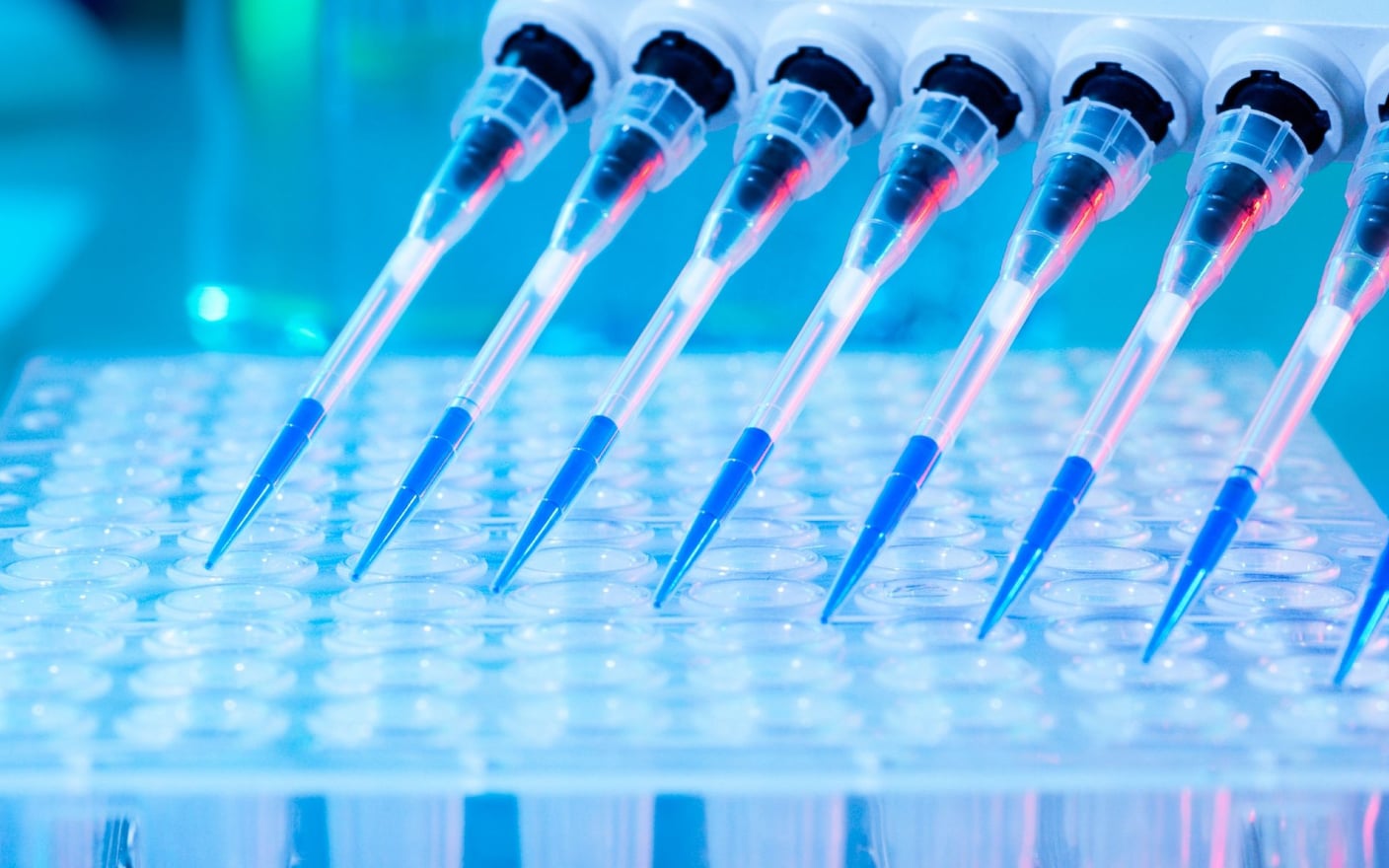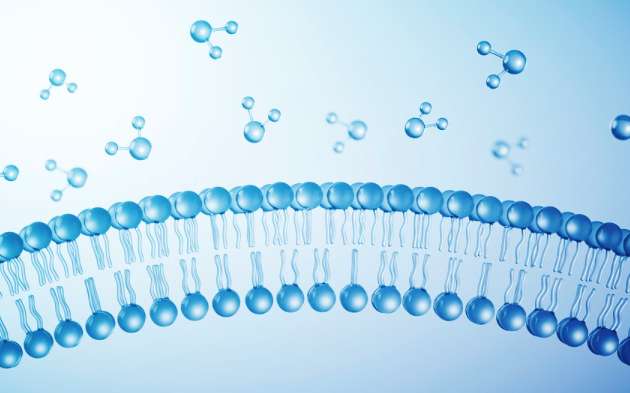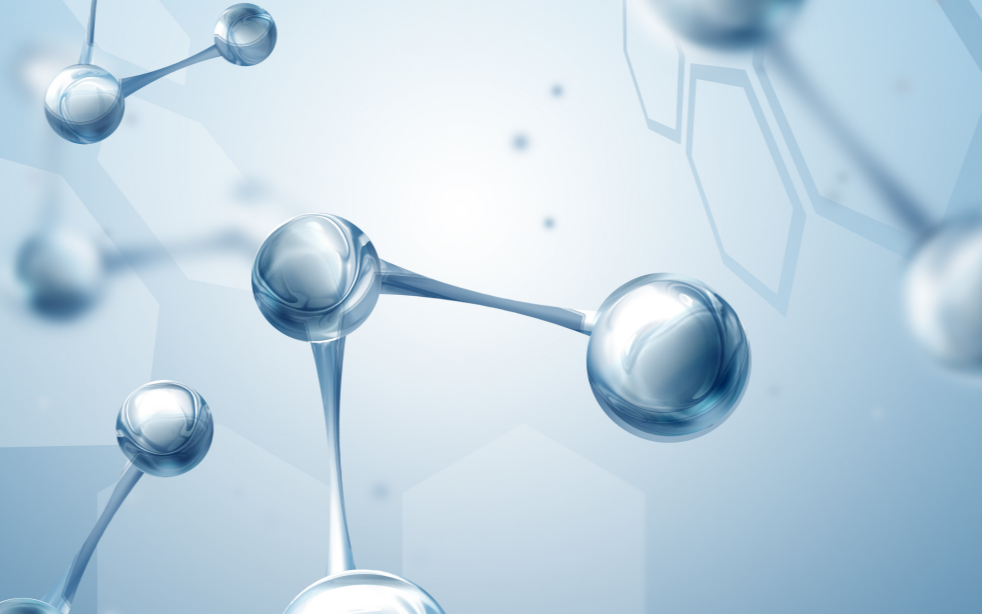Drug-induced liver injury (DILI) refers to liver injury induced by various types of prescription or over-the-counter (OTC) chemical drugs, biological agents, traditional Chinese medicine (TCM), natural medicine (NM), health products (HP), dietary supplements (DS), and their metabolites and even excipients[1]. HepaTox in China and LiverTox in the United States have documented information on liver injury in more than 1,100 common drugs. In recent years, there has been a rise in the incidence of DILI, making it the fourth most prevalent liver disease. Liver diseases caused by drugs account for 20% to 50% of non-viral liver diseases and 15% to 30% of fulminant liver failure. Therefore, DILI has become a severe public health issue that urgently needs attention. In addition, hepatotoxicity is also one of the critical reasons for drug withdrawal, restricted use, and failure of marketing. Table 1 lists drug withdrawals due to hepatotoxicity.
|
Drug Name |
Indication |
Year of Withdrawal |
Refer-ence |
|
Iproniazid |
Anti-tuberculosis, anti-depression |
1964 |
[2] |
|
Ibufenac |
Anti-inflammatory analgesic |
1968 |
[3] |
|
Tienilic acid |
Diuresis, antihypertensive |
1982 |
[4] |
|
Benoxaprofen |
Anti-inflammatory analgesic |
1982 |
[5] |
|
Perhexiline |
Angina pectoris |
1988 |
[6] |
|
Dilevalol |
Antihypertensive |
1990 |
[7] |
|
Bromfenac |
Anti-inflammatory analgesic |
1998 |
[8] |
|
Trovafloxacin |
Antibiotic |
1999 |
[9] |
|
Troglitazone |
Hypoglycemic |
2000 |
[8] |
|
Nefazodone |
Antidepressant |
2004 |
[10] |
|
Ximelagatran |
Anticoagulation |
2006 |
[8] |
|
Lumiracoxib |
Anti-inflammatory analgesic |
2007 |
[11] |
|
Sitaxentan |
Antihypertensive |
2010 |
[12] |
|
Ketoconazole (oral) |
Antifungal |
2013 |
[13] |
Table 1. Partial Withdrawals for Hepatotoxicity
DILI has become the most common reason for safety-related drug withdrawals from the market over the past 60 years, resulting in considerable losses to the pharmaceutical industry. This article will elaborate on the role of hepatic transporters from aspects such as the pathogenesis and classification of DILI and the expression and function of hepatic transporters.
Pathogenesis of drug-induced liver injury (DILI)
The pathogenesis of DILI is complex, involving multiple factors, and shows diverse clinical manifestations. In 2019, Weaver, R.J. et al. summarized six Pathogenesis of DILI: #1 Mitochondrial impairment; #2 Inhibition of biliary efflux; #3 Lysosomal impairment; #4 Reactive metabolites (chemical stress, oxidative stress, protein modification); #5 Endoplasmic reticulum stress; and #6 Immune system (innate, adaptive and inflammation) (Figure 1) [14]. It could be found that the direct damage of hepatocytes by drugs and the inhibition of biliary efflux are considered important reasons for DILI, and the occurrence of these processes is closely related to the changes in the function of hepatic transporters.

Figure 1. Pathogenesis and clinical presentations of DILI. [14]
Classification of drug-induced liver injury (DILI)
According to the pathogenesis, DILI can be divided into three types: direct hepatotoxicity, idiosyncratic hepatotoxicity, and indirect hepatotoxicity [15]. The main characteristics are shown in Table 2.
|
Feature |
Direct Hepatotoxicity |
Idiosyncratic Hepatotoxicity |
Indirect Hepatotoxicity |
|
Predictable |
Yes |
No |
Partially |
|
Frequency |
Common |
Rare |
Intermediate |
|
Reproducible in animal models |
Yes |
No |
Not usually |
|
Dose-related |
Yes |
No |
No |
|
Latency |
Short (1-5 days) |
Variable (days to years) |
Delayed (months) |
Table 2. Classification and characteristics of DILI by pathogenesis
Direct hepatotoxicity is more common and refers to the direct damage to the liver caused by drugs and/or their metabolites ingested in the body, which is often dose-dependent and usually predictable, also known as intrinsic DILI.
Idiosyncratic hepatotoxicity is rare, and its pathogenesis has become a research hotspot in recent years. The occurrence of idiosyncratic hepatotoxicity does not correlate with drug dosage, and is unpredictable. It cannot be reconstructed in animal models, with variable latency periods ranging from a few days to several years.
Indirect hepatotoxicity is caused by the action of drugs rather than by the inherent hepatotoxicity or immunogenicity of drugs, and it is a common response to an entire class of drugs rather than a specific drug. Indirect DILI is usually not correlated with drug dosage and is partially predictable. It can be reconstructed in animal models.
According to the course of disease, DILI can be divided into acute DILI and chronic DILI. In most cases of acute DILI, liver function can return to normal after discontinuation of the drug. Still, in a small number of patients, liver function cannot recover even after long-term treatment for more than six months, and acute DILI gradually develops into chronic DILI.
Based on the clinical features, DILI can be divided into hepatocellular injury, cholestasis, mixed type, and hepatic vascular injury. Changes in serum alanine aminotransferase (ALT), alkaline phosphatase (ALP), gamma-glutamyl transpeptidase (GGT), and total bilirubin (Tbil) are currently the leading laboratory indicators for determining liver injury and diagnosing DILI. The criteria for the first three types of DILI established by the Council for International Organizations of Medical Sciences (CIOMS) are shown in Table 3 [1]. When hepatocytes are damaged, the permeability of the cell membrane changes and ALT in the cells can be released into the blood, causing an increase in ALT activity in the blood. ALP and GGT are excreted with bile, and when bile excretion is blocked, ALP and GGT will increase significantly in the hepatocytes. When Tbil is not entirely excreted, and bile flow is obstructed, it easily accumulates in the blood, resulting in hyperbilirubinemia. Hepatic transporters play a crucial role in all these processes.
|
Clinical Manifestation |
Criteria |
|
Hepatocellular injury |
ALT ≥ 3 ULN and R ≥ 5 |
|
Cholestatic |
ALP ≥ 2 ULN and R ≤ 2; |
|
Mixed type |
ALT ≥ 3 ULN, ALP ≥ 2 ULN, and 2 < R < 5 |
Table 3. Clinical criteria of DILI
Note: ULN, upper limit of normal.
R = (measured ALT/ULN ALT)/ (measured ALP/ULN ALP).
Expression and function of hepatic transporters
The liver is the major metabolic and clearance organ in the human body. In addition to the expression of abundant metabolic enzymes, many functional proteins are expressed on the membrane of hepatocytes. The proteins that can transport drugs are called drug transporters, which have a critical function in drug absorption, distribution, and elimination. In recent years, about a quarter of drugs have been withdrawn from the market due to various toxic side effects related to drug transporters. Therefore, it is essential to understand drug transporters for the investigation of the mechanism of DILI.
The distribution of hepatic transporters is shown in Figure 2. The transporters involved in transporting endogenous and exogenous substances are located on the sinusoidal and canalicular membranes of hepatocytes. Among them, transmembrane transporters of the soluble carrier (SLC) family mediate the entry of endogenous and exogenous substances into hepatocytes. In contrast, those of the ATP-binding cassette (ABC) family mediate their efflux.
The absorption of exogenous substances by hepatocytes can be mediated by organic anion-transporting polypeptides (OATPs), organic anion transporters (OATs), and organic cation transporters (OCTs). Sodium taurocholate cotransporting polypeptide (NTCP) is expressed on the sinusoidal membrane of hepatocytes and mediates sodium-dependent bile acid uptake. NTCP plays an essential role in the enterohepatic circulation of bile acids. After bile acids are excreted into the small intestine, about 95% can be reabsorbed by apical sodium ion/bile acid transporter (ABST), of which 80% could be ingested into hepatocytes by NTCP and re-secreted into bile.
The transportation of drugs and their metabolites from hepatocytes back into the blood is mainly mediated by multidrug resistance protein 3 (MRP3) and MRP4. In contrast, the elimination into the bile canaliculus is mediated by several different transporters, such as MRP2, breast cancer resistance protein (BCRP), P-glycoprotein (P-gp), and multidrug and toxin extrusion 1 (MATE1). Since bile acids and their salts have certain toxicity to hepatocytes, they must be efficiently cleared, and BSEP mainly mediates this task.

Figure 2. Distribution of hepatic transporters. [16]
Transporter-mediated drug-induced liver injury (DILI)
Changes in transporter function are closely related to the occurrence of direct hepatotoxicity, and drugs can generally affect the function of transporters to cause DILI through the following two mechanisms:
1. Transporter-mediated drug interactions
The impact of drugs on the function of almost all hepatic transporters may lead to DILI. For example, a recent study found that a COVID-19 patient who was treated with Remdesivir also took chloroquine and amiodarone, resulting in severe hepatotoxicity. Since Remdesivir is a substrate of P-gp, and chloroquine and amiodarone are inhibitors of P-gp, coadministration of the two drugs with Remdesivir decreased the clearance of Remdesivir, leading to a concentration of Remdesivir in hepatocytes that exceeded the threshold of toxicity, thereby causing hepatotoxicity [17].
2. Impact of drugs or their metabolites on transporters related to bile formation, secretion, and excretion
Bile acids serve crucial physiological functions in the human body but also have inherent toxicity. When bile acid formation, secretion, and excretion are obstructed, high concentrations of bile acids will accumulate in hepatocytes and blood. High concentrations of bile acids in hepatocytes can damage the cell membrane and destroy the normal liver function. The obstruction of biliary excretion can also lead to an increase of bilirubin in hepatocytes and blood. Therefore, the dynamic balance of bile acid formation, secretion, and excretion is the basis for maintaining the normal physiological function of hepatocytes. A variety of hepatic transporters expressed on the canalicular surface and on the sinusoidal surface of the liver are involved in the formation, secretion, and excretion of bile acids and bilirubin (Table 4).
|
Location |
Transporter |
Function |
|
Canalicular surface |
BSEP |
It is the main driving force of the enterohepatic circulation of bile acids, and mainly mediates the secretion of monovalent bile salts into bile canaliculus. |
|
MRP2 |
It mediates the excretion of glucuronide or sulfated conjugated bile salts from hepatocytes into the bile canaliculus, and it is the only transporter that transports conjugated bilirubin from hepatocytes into the bile canaliculus. |
|
|
P-gp |
It involves in the transport of cholesterol. |
|
|
MDR2/3 |
They act as phospholipid export pumps, transporting phosphatidylcholine from hepatocytes to bile canaliculus, reducing the concentration of free bile salts, thereby alleviating bile canaliculus mucosal injury caused by bile salt accumulation, and coordinating with BSEP to mediate the formation of bile acid-containing bile micelles. |
|
|
Sinusoidal surface |
NTCP |
It is only expressed in the liver and is involved in the enterohepatic circulation of bile acids, allowing the uptake of conjugated bile salts from the blood into hepatocytes. |
|
MRP3 |
It is not expressed or under-expressed under normal physiological conditions. It mediates the transport of glycine, sulfuric acid, and taurine-conjugated bile salts and conjugated bilirubin from hepatocytes into the blood. |
|
|
MRP4 |
It mediates the transport of glycine, sulfuric acid, and taurine-conjugated bile salts and conjugated bilirubin from hepatocytes into the blood. |
|
|
OATP1B1/1B3 |
It mediates the transport of bile salts, conjugated and unconjugated bilirubin, etc., from the blood into hepatocytes. |
|
|
Organic solute transporter alpha/beta (OSTα/β) |
It mediates the excretion of bile salts, such as taurocholate, from hepatocytes into the blood. |
Table 4. Role of hepatic transporters in the transport of bile acids and bilirubin
Taking Troglitazone as an example, the US FDA approved Troglitazone for the treatment of type 2 diabetes in January 1997, but it was demanded for withdrawal by the UK Medicines and Healthcare products Regulatory Agency (MHRA) due to hepatotoxicity in the same year [18]. In March 2000, after 90 cases of liver failure and 63 cases of deaths were reported, the FDA notified the withdrawal of this drug, and subsequently, it was withdrawn from the Japanese market. The main cause of DILI is the inhibitory effect of Troglitazone and its metabolites on the transporters related to bile formation, secretion, and excretion. Troglitazone and its primary metabolites are BSEP inhibitors, inhibiting bile acid excretion. Meanwhile, Troglitazone is also an inhibitor of NTCP, which can reduce the reabsorption of bile acids back into the liver. This simultaneously increases the content of bile acids in the liver and blood, leading to cholestasis (Figure 3).

Figure 3. Mechanism of Troglitazone-induced DILI
BSEP and MRP2 primarily mediate the excretion of bile acids and bilirubin into the bile canaliculus, and the abnormal function of these two transporters is the main reason for the occurrence of cholestasis and hyperbilirubinemia.
BSEP is a transmembrane protein expressed on the canalicular membrane of hepatocytes. BSEP not only plays an important role in maintaining normal liver function but also participates in the excretion of bile acid and the transport of bile salts, which are the main driving forces of bile enterohepatic circulation. If the function of BSEP is inhibited, it will lead to cholestatic liver injury. The further development of cholestasis can cause liver fibrosis and cirrhosis, eventually resulting in liver failure and death. Studies have shown that BSEP is significantly related to DILI [19]. In addition, BSEP is also involved in the transport of bilirubin, and the inhibition of BSEP can lead to hyperbilirubinemia. Therefore, drug-related BSEP inhibition is considered to be the main cause of cholestasis, mixed liver injury, as well as hyperbilirubinemia.
MRP2 is primarily distributed in the liver, kidneys, and small intestine; in the liver, like BSEP, MRP2 is also expressed on the canalicular of hepatocytes and mediates the excretion of metabolites and exogenous compounds into the bile. It is a very important transmembrane transporter to balance bile acid metabolism. The substrates of MRP2 are mainly lipophilic organic anions. Therefore, MRP2 can regulate liver injury in obstructive jaundice by regulating the secretion of acid-base substances, as well as increasing the lipid solubility of bile salts to promote bile secretion. MRP2 is involved not only in the efflux of bile acids, but also in the transport process of conjugated bilirubin. The abnormal expression of MRP2 can lead to the disorder of bilirubin excretion, resulting in bilirubin accumulation, clinically significant hyperbilirubinemia, and jaundice symptoms.
Regulatory agency recommendations for transporter evaluation
Table 5 summarizes the transporters recommended for evaluation by the three major regulatory agencies: the National Medical Products Administration (NMPA, 2021), the Food and Drug Administration (FDA, 2020), and the European Medicines Agency (EMA, 2013) [20-22]. NMPA and FDA recommendations consistently focus on gastrointestinal absorption, hepatic uptake, and renal clearance. EMA added BSEP and OCT1 in addition to the FDA recommendations.
|
Transporter |
FDA |
NMPA |
EMA |
|
|
ABC |
P-gp |
√ |
√ |
√ |
|
BCRP |
√ |
√ |
√ |
|
|
BSEP |
- |
- |
Better to study |
|
|
SLC |
OATP1B1 |
√ |
√ |
√ |
|
OATP1B3 |
√ |
√ |
√ |
|
|
OAT1 |
√ |
√ |
√ |
|
|
OAT3 |
√ |
√ |
√ |
|
|
OCT1 |
- |
- |
Consider to study |
|
|
OCT2 |
√ |
√ |
√ |
|
|
MATE1 |
√ |
√ |
Consider to study |
|
|
MATE2-K |
√ |
√ |
Consider to study |
|
Table 5. Regulatory agency recommendations for transporter evaluation
Summary
Whether a drug candidate can be successfully marketed depends on the balance between efficacy and safety. One important reason for the failure of most drug candidates is their lack of good safety [23]. Hence, early identification of safety risks in drug research and development can significantly save time and costs. DILI is one of the most common reasons for the withdrawal of drugs from the market due to safety concerns. Evaluating the interactions between drug candidates and hepatic transporters associated with DILI at the early stages of drug development is crucial for advancing the process of new drug development and promoting rational drug usage.
Talk to a WuXi AppTec expert today to get the support you need to achieve your drug development goals.
Authors: Qing Liu, Tao Xiong, Genfu Chen
Committed to accelerating drug discovery and development, we offer a full range of discovery screening, preclinical development, clinical drug metabolism, and pharmacokinetic (DMPK) platforms and services. With research facilities in the United States (New Jersey) and China (Shanghai, Suzhou, Nanjing, and Nantong), 1,000+ scientists, and over fifteen years of experience in Investigational New Drug (IND) application, our DMPK team at WuXi AppTec are serving 1,600+ global clients, and have successfully supported 1,500+ IND applications.
Reference
1. Yu L, Mao Y, Chen C (2015). Guidelines for the diagnosis and treatment of drug-induced liver injury. Liver, 23(10): 750-767.
2. López-Muñoz F, Álamo C. History of the Discovery of Antidepressant Drugs. In: López-Muñoz F, Srinivasan V, de Berardis D, Álamo C, Kato T, editors. Melatonin, Neuroprotective Agents and Antidepressant Therapy. New Delhi: Springer; 2016. Available from: http://doi.org/10.1007/978-81-322-2803-5_26.
3. Drug and therapeutics bulletin. Ibufenac (Dytransin) was withdrawn. Drug Ther Bull. 1968;6(12):48.
4. Manier JW, Chang WW, Kirchner JP, Beltaos E (1982). Hepatotoxicity associated with ticrynafen – a uricosuric diuretic. Am J Gastroenterol. 77 (6), 401-404.
5. Alomar M, Palaian S, Al-Tabakha MM. Pharmacovigilance in perspective: drug withdrawals, data mining, and policy implications. F1000Research. 2019;8:2109. Available from: http://doi.org/10.12688/f1000research.21402.1.
6. Shah RR. Can pharmacogenetics help rescue drugs withdrawn from the market?. Pharmacogenomics. 2006;7(6):889–908. Available from: http://doi.org/10.2217/14622416.7.6.889.
7. Eichelbaum MF, Testa B, Somogyi A, editors. Stereochemical aspects of drug action and disposition. Springer; 2003. p. 401-32.
8. United States Food and Drug Administration. (2009). Guidance for industry: Drug-induced liver injury: premarketing clinical evaluation. Available from: http://www.fda.gov/media/116737/download.
9. Kaden, T., Graf, K., Rennert, K., Li, R., Mosig, A. S., & Raasch, M. (2023). Evaluation of drug-induced liver toxicity of trovafloxacin and levofloxacin in a human microphysiological liver model. Scientific reports, 13(1), 13338. Available from: http://doi.org/10.1038/s41598-023-40004-z.
10. Dykens, J. A., Jamieson, J. D., Marroquin, L. D., Nadanaciva, S., Xu, J. J., Dunn, M. C., Smith, A. R., & Will, Y. (2008). In vitro assessment of mitochondrial dysfunction and cytotoxicity of nefazodone, trazodone, and buspirone. Toxicological sciences: an official journal of the Society of Toxicology, 103(2), 335–345. Available from: http://doi.org/10.1093/toxsci/kfn056.
11. Profit, L., & Chrisp, P. (2007). Lumiracoxib: the evidence of its clinical impact on the treatment of osteoarthritis. Core evidence, 2(2), 131–150.
12. Liu, Q. Q., & Jing, Z. C. (2015). The limits of oral therapy in pulmonary arterial hypertension management. Therapeutics and clinical risk management, 11, 1731–1741. Available from: http://doi.org/10.2147/TCRM.S49026.
13. Gupta, A. K., & Lyons, D. C. (2015). The Rise and Fall of Oral Ketoconazole. Journal of cutaneous medicine and surgery, 19(4), 352–357. Available from: http://doi.org/10.1177/1203475415574970.
14. Weaver, R. J., Blomme, E. A., Chadwick, A. E. et al. (2020). Managing the challenge of drug-induced liver injury: a roadmap for the development and deployment of preclinical predictive models. Nature reviews. Drug discovery, 19(2): 131–148.
15. Hoofnagle, J. H., Björnsson, E. S. (2019). Drug-Induced Liver Injury - Types and Phenotypes. The New England journal of medicine, 381(3): 264–273.
16. Morrissey, K. M., Wen, C. C., Johns, S. J. (2012). The UCSF-FDA TransPortal: a public drug transporter database. Clinical pharmacology and therapeutics, 92(5): 545–546.
17. Dividis, G. P., Papadopoulos, G. E., Karageorgiou, I. (2022). Remdesivir-Induced Liver Injury in a Patient with Coronavirus Disease 2019 and History of Congestive Hepatopathy. Cureus, 14(12), e32353.
18. United States Food and Drug Administration. (2009). Guidance for industry: Drug-induced liver injury: premarketing clinical evaluation. Available from: http://www.fda.gov/media/116737/download.
19. Kenna, J. G., Uetrecht, J. (2018). Do In Vitro Assays Predict Drug Candidate Idiosyncratic Drug-Induced Liver Injury Risk?. Drug metabolism and disposition: the biological fate of chemicals, 46(11): 1658–1669.
20. National Medical Products Administration. (2021). Guideline on the Investigation of Dr-ug Interactions (Trial). Available from: http://www.cde.org.cn/zdyz/domesticinfopage?zdyzIdCODE=e0293bfd34a7c44a93382776199101bb.
21. United States Food and Drug Administration. (2020). Guidance for Industry: In Vitro Drug Interaction Studies — Cytochrome P450 Enzyme- and Transporter-Mediated Drug Interactions. 2020. Available from: http://www.fda.gov/media/134582/download.
22. European Medicines Agency. (2013). Guideline on the Investigation of Drug Interactions. Available from: http://www.ema.europa.eu/en/documents/scientific-guideline/guideline-investigation-drug-interactions-revision-1_en.pdf.
23. Waring MJ, Arrowsmith J, Leach AR, et al. (2015). An analysis of the attrition of drug candidates from four major pharmaceutical companies. Nature Reviews Drug Discovery, 14 (7): 475-486.
Stay Connected
Keep up with the latest news and insights.













